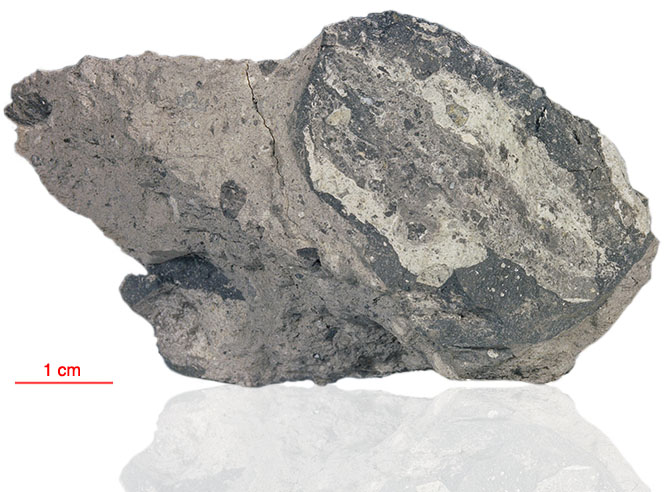
Fact sheet
72235 has a marbled texture with light and dark swirls of cataclastic feldspathic breccia with approximately the same composition, but different grain size. The intermixed light and dark layers appear to have been fluidized and consist of crushed, feldspathic material. The dark layers are very fine-grained with abundant clastic material. The light layers are crushed feldpathic granulites (rotation 1), breccias and other highlands material such as anorthosite (rotation 2), norite and troctolite. About half the plagioclase feldspar in this sample (12%) has been maskelynitised. Small (5-100 micron) patches of high-silica, high-K,Ba feldspar intergrowths occur in the darker portions of the sample.
The sample weighed 61.9 grams before analysis and has not been dated.
Further details of this and other Apollo samples are here: http://curator.jsc.nasa.gov/lunar/
Apollo 17, the final manned landing mission, had two objectives: to obtain samples of ancient rocks from the lunar highlands and to look for evidence of younger volcanic activity on the valley floor.
This small Collection contains material deriving from both periods, including igneous rocks around 4.3 billion years old from the lunar highlands as well as younger volcanic samples dating from about 3.6 billion years ago.
Apollo 17 was launched on 7 December 1972.






